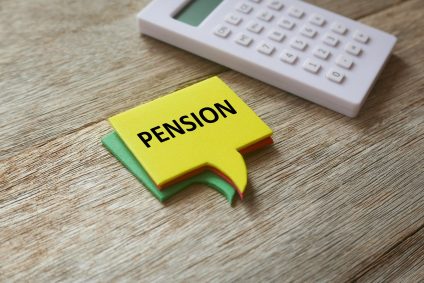All investments carry some degree of risk. We work with our clients to establish how much risk they are comfortable with, as well as the level of return they need to achieve their goals. Matching a given tolerance for risk with the most suitable investment portfolio is an important part of a financial planner’s job.
Quantifying risk profiles can be challenging. An investor may feel that they are ‘cautious’ or ‘adventurous’ in terms of risk, but what does that really mean, and how does it translate into an investment strategy?
We have been considering this issue for some time, and as a result, have decided to make some changes to how we define risk profiles.
The Old System
Traditionally, you would see risk levels categorised by a description or a number. Our previous system used a descriptive basis, with the models defined as follows:
- Defensive
- Cautious
- Conservative
- Moderate
- Confident
- Adventurous
- Speculative
The investment portfolios aligned with these risk profiles still meet our robust criteria and work very well. Similarly, our advice process means that all clients are invested in the most suitable model for them, taking into account their goals, circumstances, and views on risk.
However, we constantly work to improve how we communicate and present information to clients. We felt that our process for defining risk was in need of an overhaul.
Why We Are Making the Change
The problem with applying a descriptive word to a risk level or portfolio is that it is entirely subjective. Someone may consider themselves cautious, but the idea of leaving their money in cash, to be eroded by inflation, is not appealing. A diversified portfolio, even at the cautious end of the risk spectrum, will still go up and down.
Similarly, an investor may be adventurous in general, but might feel uncomfortable holding the majority of their hard-earned pension fund in equities, particularly if they are coming up to retirement.
Clearly the issue is more complex than can be defined by a single descriptive word.
This is why we have decided to remove all seven descriptive words like ‘Moderate’ or ‘Adventurous’ from the names of our model portfolios.
Each profile will still be synonymous with one of seven UK National Parks but will also largely be identified based on its asset allocation, or rather its equity to bond ratio. These are the two main asset classes that constitute our risk models as well as most global investment opportunities.
Introducing the New Risk Profiles:
Our TRAILS™ system is built around your financial planning journey. What better way to describe the various paths you might take than comparing them with some of our beautiful National Parks?
The new risk profiles are described below. Some are gentle and undemanding but less dramatic. Others offer stiffer ascents and increased danger, but with more spectacular views.
Trail 1 – The Broads (20% Equity: 80% Bonds)
Sensitive to short term losses, but still aims to beat inflation over the long run. You are not comfortable with volatility within your portfolio and you are keen to keep risk to a minimum.
Trail 2 – South Downs (34% Equity: 66% Bonds)
Still sensitive to short term losses, but with a likely goal of beating inflation over the long run. You seek growth in the real value of your assets over the long term but while minimising risk.
Trail 3 – Pembrokeshire Coast (50% Equity: 50% Bonds)
Less sensitive to short-term losses you are willing to take on slightly more risk than a cautious investor in order to increase expected return, although risk is still an important consideration.
Trail 4 – Peak District (Moderate – 60% Equity: 40% Bonds)
Willing to accept more risk than a conservative investor, but you are probably not willing to accept the short-term downside risk associated with achieving a long-term return dramatically above the inflation rate.
Trail 5 – Northumberland (70% Equity: 30% Bonds)
Comfortable with more risk than a moderate investor but you are not comfortable with the short-term risk associated with achieving a long-term return dramatically above the inflation rate. You think of risk more as opportunity than uncertainty.
Trail 6 – Lake District (80% Equity: 20% Bonds)
Seeking to maximise long-term returns rather than minimise short-term losses. You are more concerned with the potential of financial return than with short-term volatility, but you wish to retain some marginal protection against downside risk.
Trail 7 – Cairngorms (100% Equity: 0% Bonds)
Focused on maximising long-term expected returns rather than minimising possible short-term losses. You understand there is no marginal protection against capital risk, since 100% of the investments are in growth assets but you are willing to accept these risks to achieve the best possible return.
The asset allocation is a guideline, as the portfolios will also include some holdings in property (which is classed as a ‘growth’ asset in the same way as equities) and 2% cash to cover charges.
TRAILS™ Ethical Models
TRAILS™ Ethical gives you the opportunity to invest some or all of your money into a well-diversified portfolio of funds that adhere to higher social and moral values, whilst still giving you the opportunity for long-term growth. Seven of our nation’s favourite herbs symbolise the different ‘model’ portfolios that have been devised with asset allocations that offer specific levels of risk and potential return. These are described below:
Herb 1 – Chives (20% Equity: 80% Bonds)
Herb 2 – Rosemary (34% Equity: 66% Bonds)
Herb 3 – Parsley (50% Equity: 50% Bonds)
Herb 4 – Mint (60% Equity: 40% Bonds)
Herb 5 – Sage (70% Equity: 30% Bonds)
Herb 6 – Basil (80% Equity: 20% Bonds)
Herb 7 – Thyme (100% Equity: 0% Bonds)
The names of these models are remaining the same.
How Are the Models Constructed?
Our models are made up of a carefully selected range of index and passive funds, from leading investment houses such as Vanguard, Dimensional, and BlackRock (iShares).
Our Cairngorms (i.e. highest risk) model hold up to 100% in equities spread over 6 funds – but these funds collectively hold over 12,000 individual stock holdings.
In this situation, having 100% equities, does not mean that you are gambling or day trading. It simply means that this model has no downside protection from bonds, and as such the portfolio is likely to incur more volatility than the other models over time, however the potential for long-term return is higher.
The stocks in our portfolios are invested in line with global market capitalisation. You can find out more about this here.
What Does This Mean for You?
We feel that the new names and descriptions allow us to explain the different risk levels and corresponding portfolios more clearly.
The principles around how we invest money have not changed. The ‘secrets’ to successful investing include the following:
- Time – investing means at least 10 years or more. If you invest your money in any model for this period, it should outperform both cash and inflation. It is a case of ‘time in’ the markets not, timing the markets.
- Control what you can – for example: keep costs low, hold an appropriate mix of equities and bonds, diversify, and use well-established investment houses.
- Discipline – it is important to keep short term market movements in perspective. Capitalism works. Markets will go down as well as up, but overtime they go up. Remain invested and maintain your resolve. Believe in the process.
- Risk and Return are related – The higher the risk, the higher the return, but the more volatility.
Please do not hesitate to contact a member of the team to find out more.




